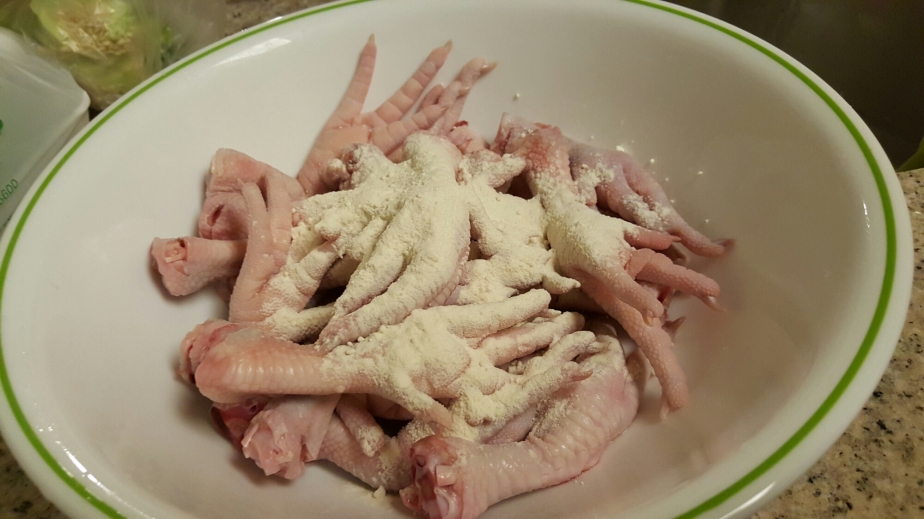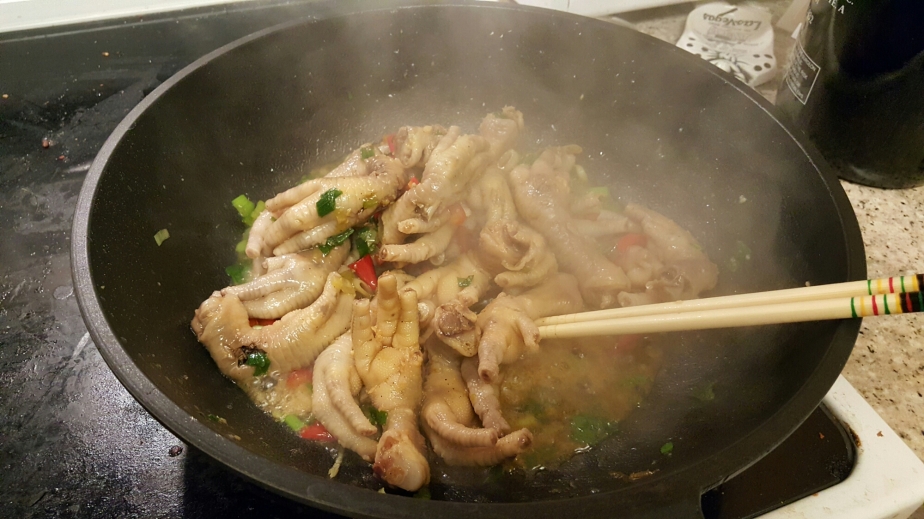So as of late, I’ve been following a lot of chefs I like on Facebook and Instagram. I love their short videos and posts because they usually have one or two good tidbits on cooking and are just great fun to watch. There are many of these chefs and food personalities that have live feed sessions which I think are great. Even though I am watching a video, the mere fact that it’s live makes me feel like I am part of something big. One of the Facebook pages I love following is Chef Jet Tila (Go Team Tila!). During one of his live feed sessions, he did a quick demonstration on how to make his famous Drunken Noodle. Half of the ingredients I had already prepped up from cooking the day before. (I made 닭고기 냉채, or Cold Mustard Chicken). The recipe was quick and relatively simple. However, the remaining ingredients were mostly ones I’ve never used: Thai Basil, Sweet Soy Sauce, and Fish Sauce. I love me some good Thai food and Vietnamese food, where these ingredients may be very common. However, I’ve never used them in cooking. And I am surprised I have gone this far without it.
Thai Basil is very fragrant, and I love it in Drunken Noodle, Green Curry, and San Bei Ji (or Three Cup Chicken). It has a very herbaceous quality and, personally, more fragrant than regular basil.
Sweet Soy Sauce was a new one for me honestly. I thought it would be more like a teriyaki sauce, which is what I’m used to when I think of a sweet soy sauce. However, it has a lot of depth and umami; it is more akin to oyster sauce than soy sauce in my opinion. It is very thick and has a lot of flavor. When I bought a bottle and tasted it, I immediately found the missing flavor I’ve been tasting in a lot of southeastern dishes.
The third one, Fish Sauce, I’ve naturally stayed away from when cooking due to the fright if my whole kitchen smelling like fish. But I love most dishes that uses fish sauce (even the pickled chili in fish sauce at Thai Restaurants). Korea uses fish sauce also, especially when making Kimchi, but it has been something I’ve never had to use. Fish sauce provides the salty and umami flavor in dishes. The aroma that fills the kitchen isn’t as fishy as I thought, or at least it doesn’t smell like a rotten fish.
I wish I could provide a recipe for Drunken Noodle, I did not write down the amounts of ingredients, especially the sauce. And honestly, I followed Chef Tila’s video that I wouldn’t take any credit for it. I eyed the amount for the sauce and adjusted it to my taste. Search for Jet Tila Drunken Noodle on Facebook to view the video. He also posted a link to his recipe somewhere on his page also.
One thing that this cooking session made me learn is why there is a strong emphasis in mise en place for cooking in general. Mise en place means “Everything in its place” in French and commonly refers to the prep work done before cooking. Cutting all the veggies into the correct shapes such as julienne really helps reduce the cooking time. I had onions, red bell peppers, garlic, and ginger already prepped from the night before’s cooking session. I was able to start cooking right away and the whole dish was done in 10 min.
Chef Jet Tila’s recipe came out great and it tasted amazing. Korean food has been about a lot of clean flavors that I tended to go simple with sauces and condiments. When I started cooking some Chinese food, I added Peanut Sauce, Oyster Sauce, Housing Sauce, and Tobin Djang to my arsenal to create depth of flavor and complexity. And now, I have added two more arsenals: Sweet Soy Sauce and Fish Sauce. There are times where I’ve been wanting certain flavor profiles that I couldn’t figure out and these two really help get me closer to bringing versatility to my cooking style. The drunken noodle is simple to to make but complex in flavors. It is more sweet, spicy (I used a lot of serranos and Sriracha, not the rooster one), acidic (tomato), and is packed with umami (Fish Sauce, Oyster Sauce, and Sweet Soy Sauce).
I don’t think I will order Drunken Noodles outside anymore. No need. This is just so damn good.


















